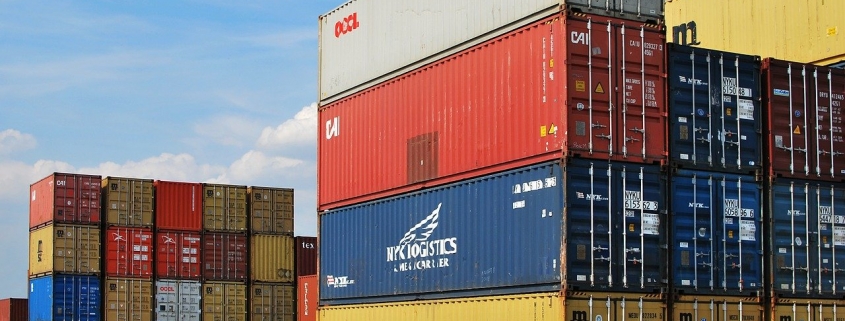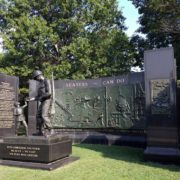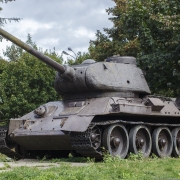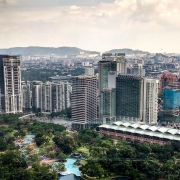What is the purpose of AFTA?
Topic of Study [For H2 History Students]:
Paper 2: Regional Conflicts and Co-operation
Source Based Case Study
Theme III Chapter 2: ASEAN (Growth and Development of ASEAN : Building regional peace and security)
What is the AFTA?
On 28 January 1992, ASEAN formalised the ASEAN Free Trade AREA (AFTA), which aims to enhance the region’s competitive advantage as a production base to access the world market in the post-Cold War world. Through the Common Effective Preferential Tariff (CEPT) Agreement, the elimination of tariff and non-tariff barriers among member nations would help to expand intra-regional trade.
At first, then Thai Prime Minister Anand Panyarachun proposed the AFTA during the 24th ASEAN Ministerial Meeting in July 1991. At the Kuala Lumpur meeting, his Malaysian counterpart Dr. Mahathir Mohamad lent support to Anand’s proposal.
Establishment of a Free Trade Area
54. The Foreign Ministers welcome as a matter for serious consideration the initiative of His Excellency the Prime Minister of Thailand, which was supported by the Honourable Prime Minister of Malaysia, that ASEAN moves towards a Free Trade Area by the turn of the century, and agreed that the Senior Officials of ASEAN undertake further study and discussion for submission to the forthcoming ASEAN Summit.
An excerpt from the 1991 Joint Communique of the 24th ASEAN Ministerial Meeting in Kuala Lumpur, Malaysia, 20 July 1991.
The backstory of AFTA: Lee’s meeting with Anand
Before the AFTA was created, Senior Minister Lee Kuan Yew met the incoming Prime Minister Anand in May 1991. Apart from the discussion of a recently resolved Cambodian conflict, Lee brought up the topic of regional trade. Although Singapore was at the forefront of economic development in the region, not all member nations shared similar sentiments in promoting regional economic cooperation, partly due to inter-state tensions.
Strategically, Lee and Anand both knew AFTA could not be promoted as any sort of Singaporean initiative. “If Indonesia and Malaysia had known the idea was discussed at my meeting with Lee Kuan Yew, it would have been a problem and treated with a degree of skepticism,” said Anand. Indonesia felt it should always take a leading role in ASEAN affairs, which is one of the reasons the grouping’s secretariat had been established in Jakarta in 1975. Meanwhile Malaysia has always been suspicious of anything with Singaporean fingerprints on it.
Lee was circumspect about his meeting with Anand. “He understood the economics of trade and investment in an interdependent world,” Lee later wrote. “To avoid lingering suspicions about Singapore’s motives, I advised Prime Minister Goh to get Anand to take the lead to push for an ASEAN Free Trade Area.”
An abridged excerpt from “Anand Panyarachun and the Making of Modern Thailand” by Dominic Faulder.
Features of the AFTA
Under the CEPT Agreement, tariff rates levied on a range of products traded within Southeast Asia should be lowered to 0-5%. Notably, there are exclusions to protect the interests of key industries for member nations. An extended deadline was given to new members like Vietnam (2013) and Cambodia (2017), so that they have adequate time to facilitate market integration with the free trade area.
CONVINCED that preferential trading arrangements among ASEAN Member States will act as a stimulus to the strengthening of national and ASEAN Economic resilience, and the development of the national economies of Member States by expanding investment and production opportunities, trade, and foreign exchange earnings;
DETERMINED to further cooperate in the economic growth of the region by accelerating the liberalisation of intra-ASEAN trade and investment with the objective of creating the ASEAN Free Trade Area using the Common Effective Preferential Tariff (CEPT) Scheme;
An excerpt from the Agreement on the Common Preferential Tariff (CEPT) Scheme for the ASEAN Free Trade Area Singapore, 28 January 1992.
What can we learn from this article?
Consider the following question:
– Assess the effectiveness of ASEAN in promoting regional economic cooperation through the AFTA in the 1990s.
Join our JC History Tuition to study the effectiveness of ASEAN in promoting regional cooperation. The H2 and H1 History Tuition feature online discussion and writing practices to enhance your knowledge application skills. Get useful study notes and clarify your doubts on the subject with the tutor. You can also follow our Telegram Channel to get useful updates.
We have other JC tuition classes, such as JC Math Tuition and JC Chemistry Tuition. For Secondary Tuition, we provide Secondary English Tuition, Secondary Math tuition, Secondary Chemistry Tuition, Social Studies Tuition, Geography, History Tuition and Secondary Economics Tuition. For Primary Tuition, we have Primary English, Math and Science Tuition. Call 9658 5789 to find out more.











